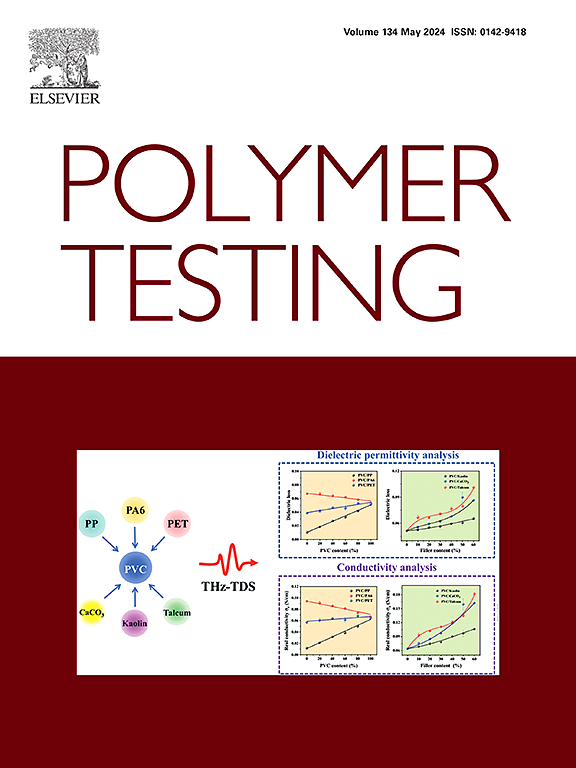电驱动 4D 印刷混合铜纤维-碳黑增强复合材料
IF 5
2区 材料科学
Q1 MATERIALS SCIENCE, CHARACTERIZATION & TESTING
引用次数: 0
摘要
本研究旨在通过将铜纤维和炭黑加入各种复合配方中,优化电动4d打印定制生物医学设备的恢复性能。经过广泛的实验,选择了六种复合配方,在2 A和3 A两种电流水平下进行电气驱动测试。结果表明,提高炭黑浓度(0.2%)和将电流从2a增加到3a,可以显著提高性能。最佳组合由20%的铜纤维和0.2%的炭黑组成,在3a时实现了95%的最高回收率,同时驱动温度降低了近11°C,突出了其适应性生物医学设备的适用性。而在2 A时,相同的组合物的回收率为76%。此外,检测的样品显示出显著的固定比,范围从98%到100%。这些结果突出了复合材料配方和电流水平对优化回收性能的重大影响。本文章由计算机程序翻译,如有差异,请以英文原文为准。
Electrically actuated 4D printed hybrid copper fiber-carbon black reinforced composites
This study aims to optimize the recovery performance of electrically actuated 4D-printed customized biomedical devices by incorporating copper fibers and carbon black into various composite formulations. After extensive experimentation, six composite formulations were selected for testing under electrical actuation at two current levels: 2 A and 3 A. Results indicate that higher carbon black concentrations (0.2 %) and increased current from 2 A to 3 A significantly improved performance. The optimal composition, consisting of 20 % copper fiber and 0.2 % carbon black, achieved the highest recovery ratio of 95 % at 3 A, along with an almost 11 °C reduction in actuation temperature, highlighting its suitability for adaptive biomedical devices. While at 2 A, the same composition exhibited a recovery ratio of 76 %. Furthermore, the examined samples exhibited notable fixity ratios, ranging from 98 % to 100 %. These outcomes highlight the substantial impact of both composite material formulation and the electrical current level on optimizing recovery performance.
求助全文
通过发布文献求助,成功后即可免费获取论文全文。
去求助
来源期刊

Polymer Testing
工程技术-材料科学:表征与测试
CiteScore
10.70
自引率
5.90%
发文量
328
审稿时长
44 days
期刊介绍:
Polymer Testing focuses on the testing, analysis and characterization of polymer materials, including both synthetic and natural or biobased polymers. Novel testing methods and the testing of novel polymeric materials in bulk, solution and dispersion is covered. In addition, we welcome the submission of the testing of polymeric materials for a wide range of applications and industrial products as well as nanoscale characterization.
The scope includes but is not limited to the following main topics:
Novel testing methods and Chemical analysis
• mechanical, thermal, electrical, chemical, imaging, spectroscopy, scattering and rheology
Physical properties and behaviour of novel polymer systems
• nanoscale properties, morphology, transport properties
Degradation and recycling of polymeric materials when combined with novel testing or characterization methods
• degradation, biodegradation, ageing and fire retardancy
Modelling and Simulation work will be only considered when it is linked to new or previously published experimental results.
 求助内容:
求助内容: 应助结果提醒方式:
应助结果提醒方式:


